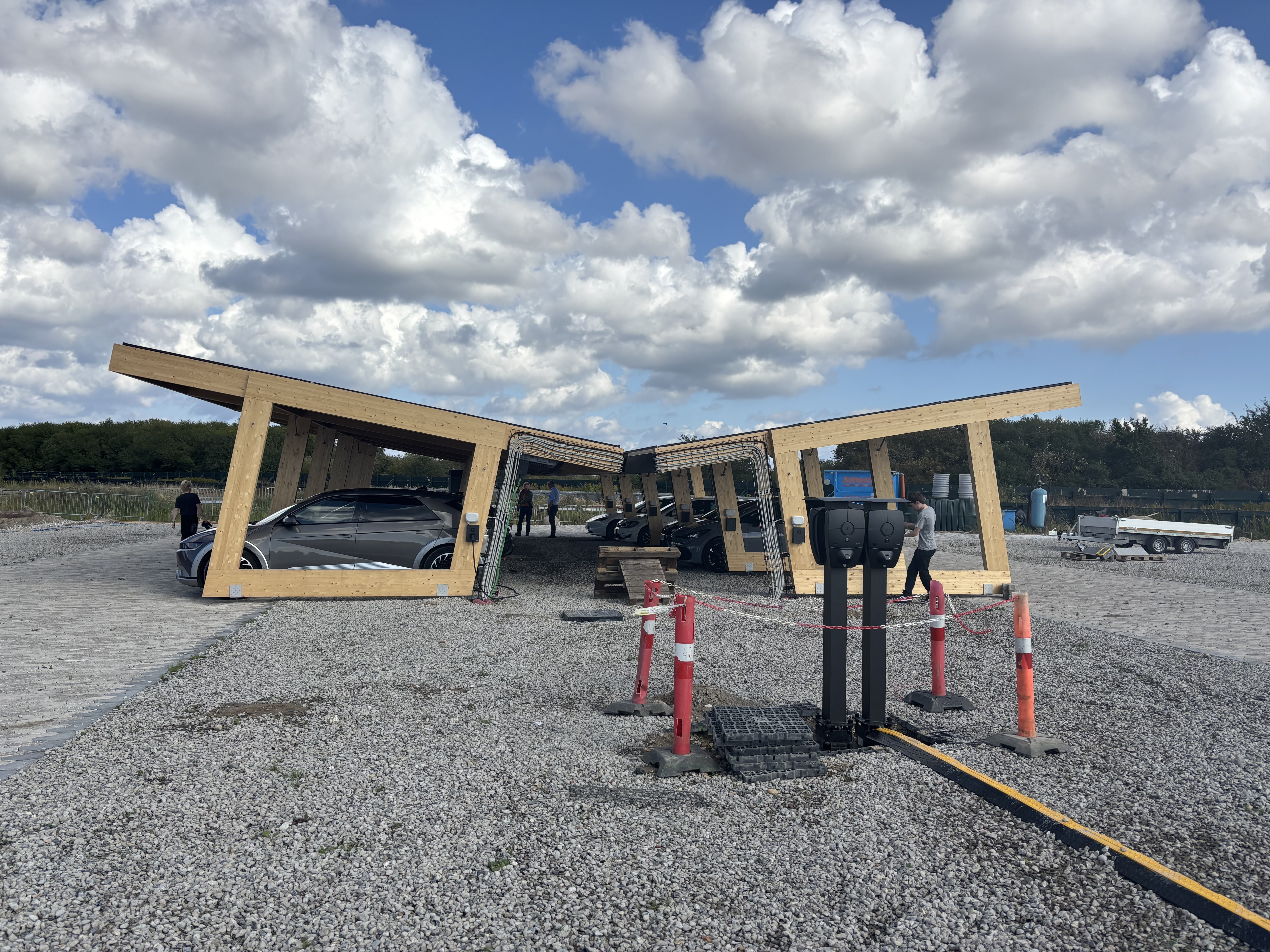What Makes the Super Smart Charging Hub Unique?
The SSCH at Fælledby is designed as a "living lab"—a real-world environment where innovative green technologies can be tested, adapted and scaled. It is fully compatible with the upcoming ISO 15118-20 standard, enabling smart communication between vehicles and the grid (V2G) for optimized charging.
Speakers at the event included:
Michael Dagø (Fælledby), Senior Project Director and Architect (link to the presentation)
Dagø introduced the broader vision behind Fælledby, a pioneering sustainable neighbourhood on a former landfill in Copenhagen. Highlights include:
- 2,000 timber-built homes for 5,000 residents
- 25% public housing, plus a school, daycare centres and elderly care
- Built-in safeguards against methane and pollution
- One-third of the site dedicated to nature and biodiversity, including habitats for 72 species
- Prioritization of car-free living, with electric car sharing, bike infrastructure and pedestrian zones
- Smart, flexible mobility solutions tailored through resident engagement
Fælledby isn’t just a housing project—it's a blueprint for inclusive, nature-first, low-carbon urban living.
Steen Olesen (Sustain), Partner, SSCH Project (link to the presentation)
Olesen outlined the technical backbone of the Super Smart Charging Hub, which includes:
- 30,000 m² of solar panels (5 MWp)
- 4.5 MWh of battery storage
- Up to 700 EV charging points with V1G (unidirectional) and V2G (bidirectional) capabilities
- Smart meters and energy management via platforms like WattsLive and XoltaAPP
A key innovation is the use of a collective tariff model, incentivizing residents to consume and store energy in sync with solar and wind availability—helping to ease pressure on the grid.
Olesen also addressed the "Double Brain Problem": when multiple control systems compete to manage energy flow, causing inefficiencies. A unified Virtual Power Plant (VPP) controller is being developed to resolve this and ensure smooth, efficient energy management across all sources.
Christian Adelhardt (Energinet), Business Developer (link to the presentation)
From a national perspective, Adelhardt explained how V2G technology can help balance Europe's renewable energy systems. EVs are described as "energy on wheels", capable of storing excess solar or wind power and feeding it back when needed.
Key insights included:
- The importance of open energy markets and transparent data
- Regulatory alignment across countries and sectors
- Overcoming the Double Brain Problem through standardization
Adelhardt also shared progress on the “Coalition of the Willing on Bidirectional Charging from 2025”—a European initiative involving 9 countries and 150+ stakeholders. The coalition’s blueprint for V2X ecosystems includes use cases for homes, workplaces, public spaces, and apartment buildings, emphasizing open standards, user-centric design, and interoperability.
Morten Ebbesen (Energi360), Project Lead, Solar Mobility Solutions (link to the presentation)
Ebbesen presented an innovative concept for solar-powered carports, where each parking space is topped with 9 solar panels generating ~4,000 kWh annually. Ten of these spots can power:
- 13 electric cars per year, or
- 20 apartments’ annual electricity consumption
He also demonstrated how dynamic energy pricing, with seasonal and hourly variations, can encourage more efficient energy use. This aligns user behaviour with grid capacity and promotes self-sufficiency through local renewable generation.
Mette Marie Knudsen (Zaptec Denmark), CEO, Zaptec Denmark (link to the presentation)
Knudsen emphasized Zaptec’s philosophy of innovation through experimentation:
“Act, fail, learn, improve.”
She sees Fælledby as a testbed for everyday innovation, where electric vehicles become fully integrated into daily life—not just as transportation, but as a dynamic part of the energy system.
Despite the slow rollout of ISO 15118-20 due to its complexity, Knudsen remains optimistic. AI-powered smart charging and V2X (Vehicle-to-Everything) solutions are on the horizon—even in multi-family housing. She closed with a call for continued cross-sector collaboration, noting:
“The future of mobility won’t be built in silos—it will be built together.”
What’s Next?
With the Super Smart Charging Hub now live, Fælledby positions itself as a real-world laboratory for the future of smart, green mobility. The insights gained from this initiative will inform broader national and European strategies for scalable, user-friendly, and sustainable energy systems.

